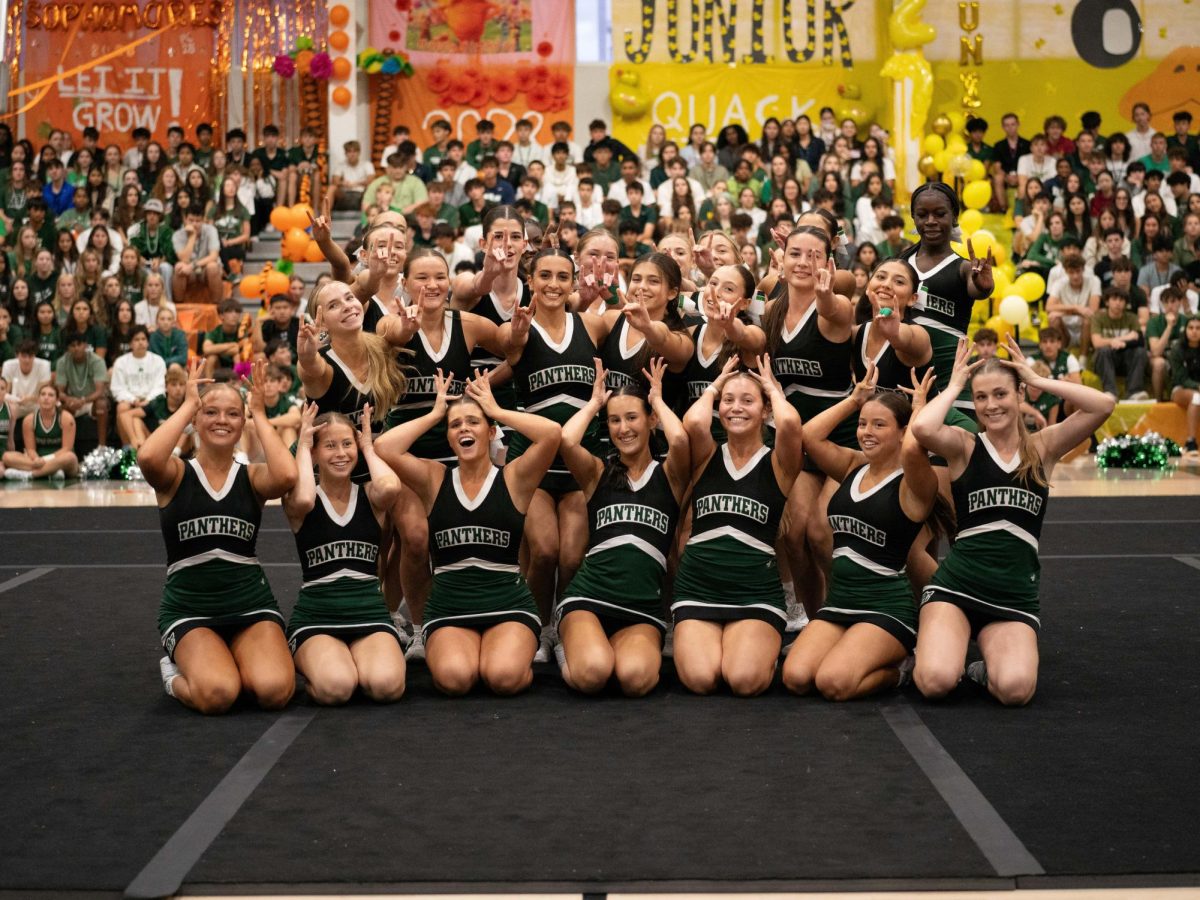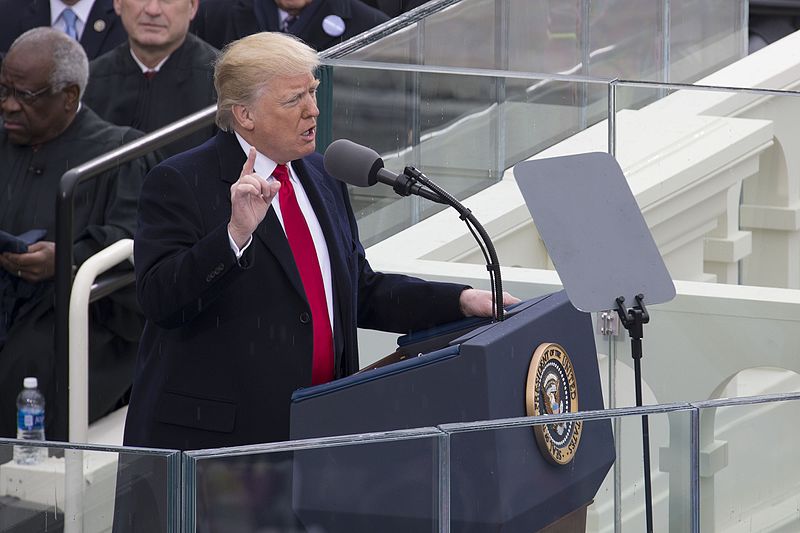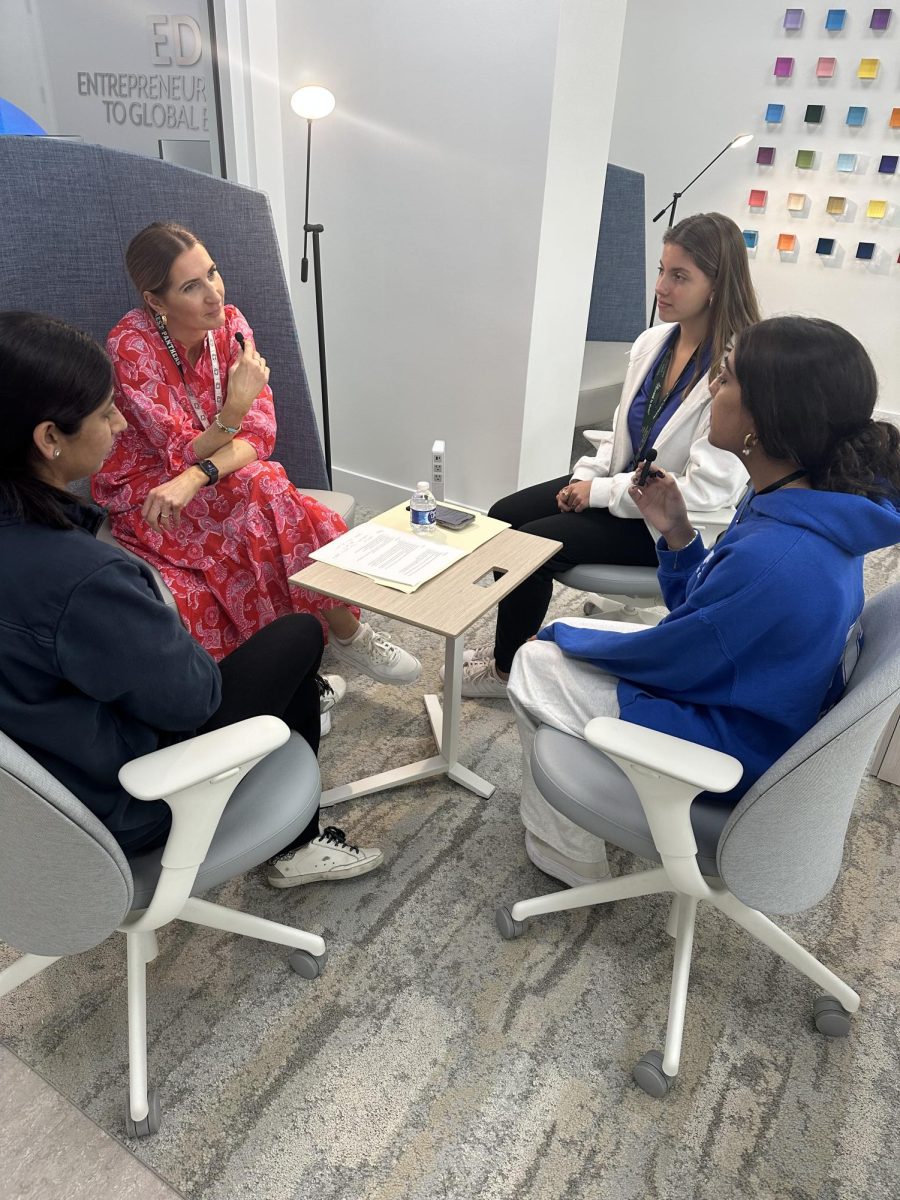[ot-caption title=”No matter their political affiliation, Americans had an important first week in the new administration.” (Wikimedia, US Marine Corps Lance Cpl. Cristian L. Ricardo)”]
Donald J. Trump became the 45th president of the United States on January 20th 2017. He was sworn in by Chief Justice John Roberts. After taking the oath of office, he gave a relatively short inauguration speech in comparison to other Presidents. He discussed giving the power back to the people, and the main focus of the speech was centered around the economy, specifically increasing jobs. [spacer height=”20px”]
Although many were inspired by his hope to make America great again, others were offended by what they saw as a verbal attack of previous politicians, when he claimed that “Washington flourished, but the people did not share in its wealth.” [spacer height=”20px”]
On inauguration day, many news outlets compared Trump’s inauguration to that of Obama’s in both 2009 and 2013. Trump’s press secretary Sean Spicer released false information that echoed Trump’s claims that “this was the largest audience to ever witness an inauguration;” however, according to the New York Times, the number of live and television viewers were both significantly smaller than Obama’s. Spicer also stated that the subways had more passengers heading to the inauguration than Obama, yet tweets posted that day revealed that there were over 100,000 more passengers on the subway the day of his inauguration.[spacer height=”20px”]
On Saturday, millions of people joined forces to participate in approximately 700 Women’s Marches, with a focus on peacefully protesting for women’s rights. These demonstrations occurred in over 60 countries and on every continent, including a small group in Antarctica. Researchers believe that this may have been the largest political demonstration in United States history. The most impressive part of the marches was that they were all nonviolent. Women of all ages stood together wearing pink and holding signs in an attempt to speak out against what Trump represents. Many women have been offended over the past year by Trump’s derogatory comments toward women and the potential of the government passing policy that restricts women’s rights. [spacer height=”20px”]
Trump has been very active since his inauguration. He has signed many executive orders so far including one that was a withdrawal from the Trans-Pacific Partnership, a multinational trade deal that he claims puts American workers at risk. His second order reestablished the Mexico City Policy, which prohibits United States organizations from helping less developed countries with family planning services. He established a federal hiring freeze, excluding only the “military, public safety and public health jobs.” He also issued a significant executive order to begin plans for a wall to demarcate the border between the United States and Mexico. Another executive order that Trump signed on Friday bans all citizens from seven Muslim-majority countries from entering the United States for at least the next 90 days. The countries banned include Iraq, Syria, Iran, Libya, Somalia, Sudan and Yemen. It is unclear what will happen with the future of this Muslim ban, but it is currently in effect, according to a White House spokesperson, to “keep America safe.” [spacer height=”20px”]
However, President Trump has done much more than simply sign executive orders. He made his cabinet nominations official, took control of the nuclear codes, and faced his first natural disaster as President when deadly tornadoes struck Georgia. He altered a mortgage plan for first time homeowners, overruling their mortgage reductions. He has also begun preparing to revoke the Affordable Care Act. [spacer height=”20px”]
On the international scale, he discussed with Israeli Prime Minister Benjamin Netanyahu the possibilities of moving the United States Embassy from its current location in Tel Aviv to Jerusalem. Additionally, he contacted British, Canadian, and Mexican leaders to meet in the near future. A meeting was set with Mexican President Enrique Peña Nieto until further disagreements about the wall along the US and Mexican border arose, and the two presidents jointly cancelled the meeting; they spoke later on via telephone. [spacer height=”20px”]
President Trump also had a very important diplomatic meeting this week with British Prime Minister Theresa May. She became the first foreign leader to sign the White House book that documents significant leaders visits to the White House. [spacer height=”20px”]
President Trump also signed an important executive order this week that suspends immigration indefinitely for Syrian refugees and temporarily suspend immigration for refugees from Iran, Sudan, Libya, Somalia, Yemen, and Iraq for 90 days. This order has been controversial this week. Many have come out in support claiming it is a way to defend the country against terrorism, while others see the act as unconstitutional and a violation of human rights which they have made clear via protests at major airports where many refugees are being detained. [spacer height=”20px”]
Trump also recently fired the sitting Attorney General, Sally Yates, for being unwilling to enforce his executive orders on immigration. She has been replaced with a new Attorney General named Dana Boente. He will likely not be the Attorney General for long because Trump has nominated Jeff Sessions to take the role, and he is awaiting a vote in the Senate. [spacer height=”20px”]
President Trump had a very busy week, and activists who support and oppose his decisions made sure to keep him accountable. Trump will have some even more crucial decisions to make in the coming weeks as he tries to establish a legacy for his first 100 days. [spacer height=”20px”]
Sources: Presidency, Washington Post, New York Times, The Hill, Huffington Post, Vox, NPR, CNN, Fox 59, Vox, Town Hall, WSBTV, Daily Mail, CBS News, BBC
































![Stranger Things 4: What to Expect [Warning: Contains Spoilers]](https://pcpawprint.com/wp-content/uploads/2021/11/StrangerThings4-900x473.jpeg)























































